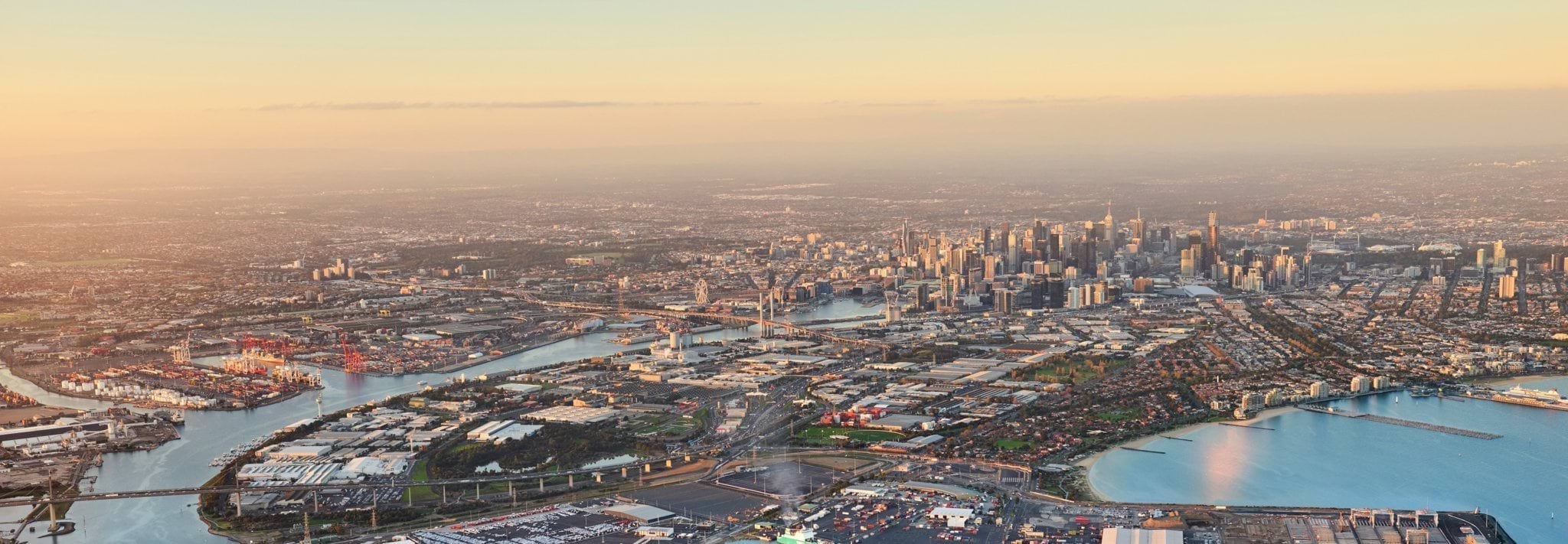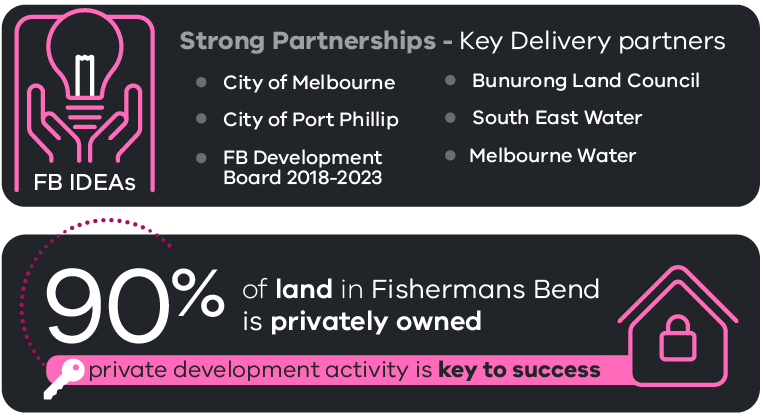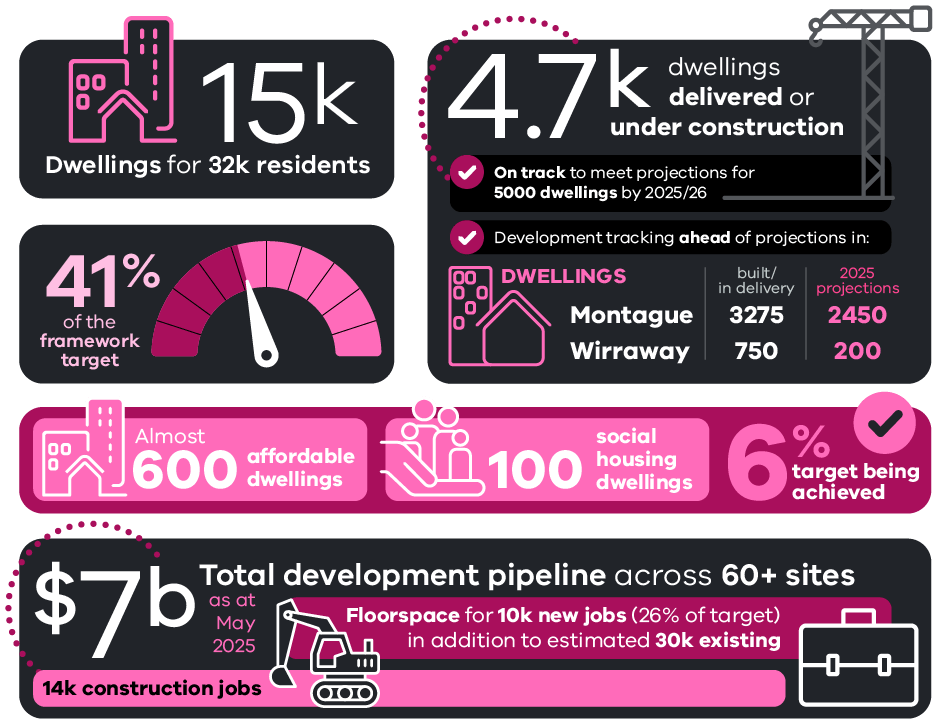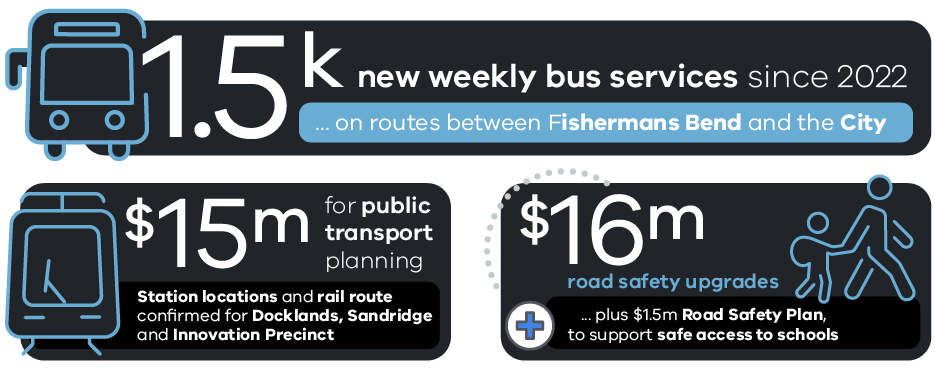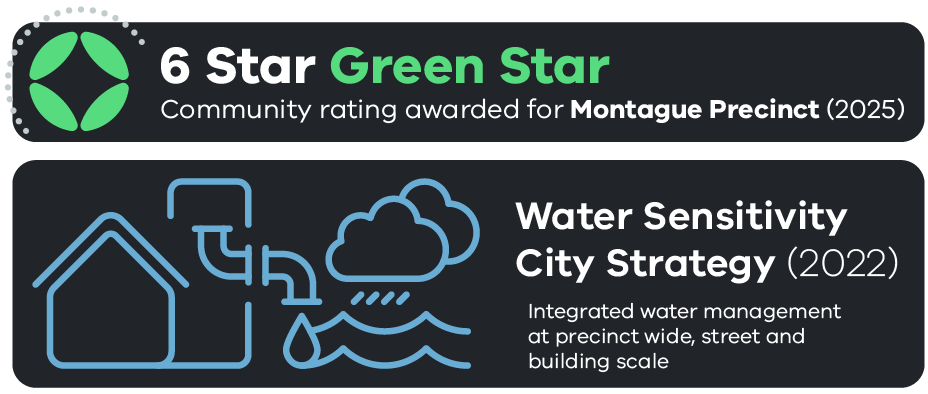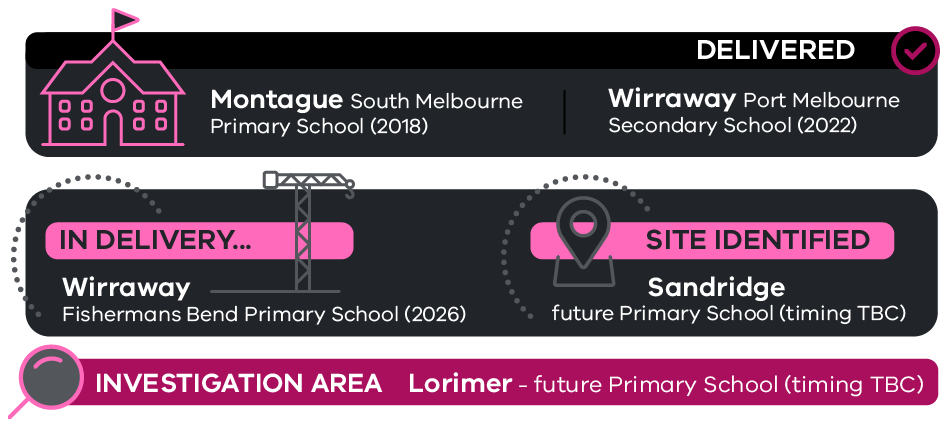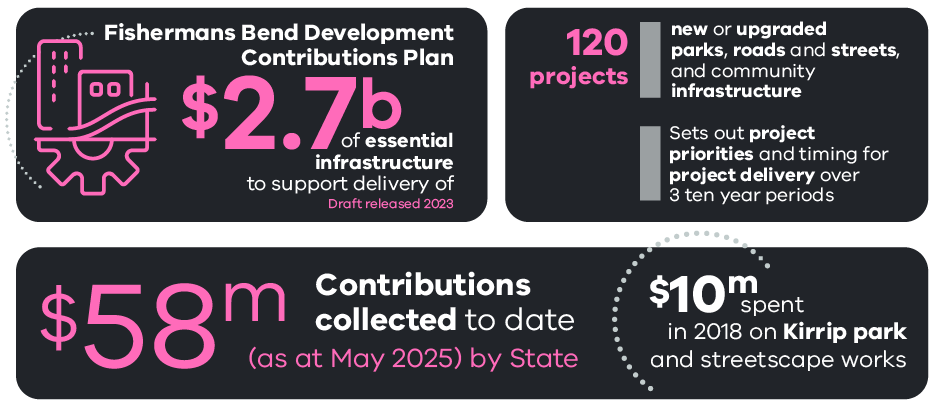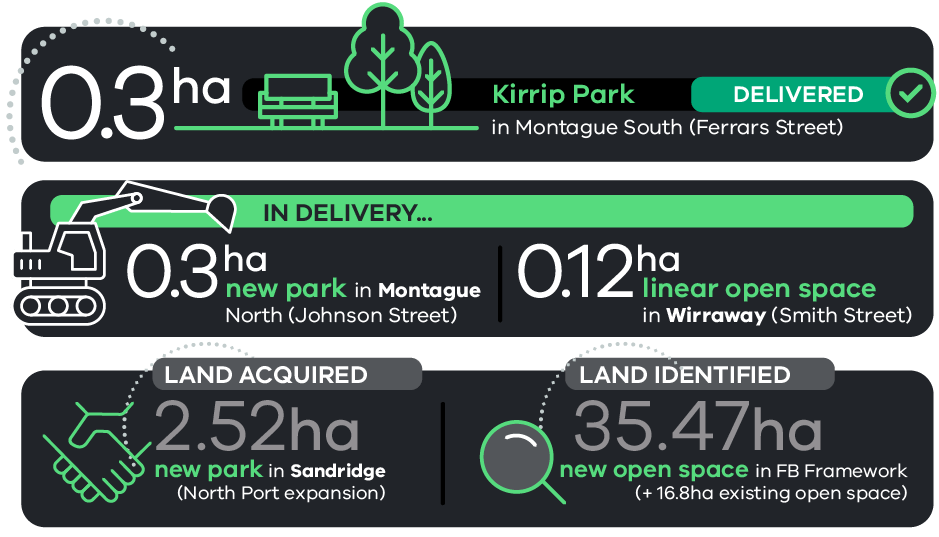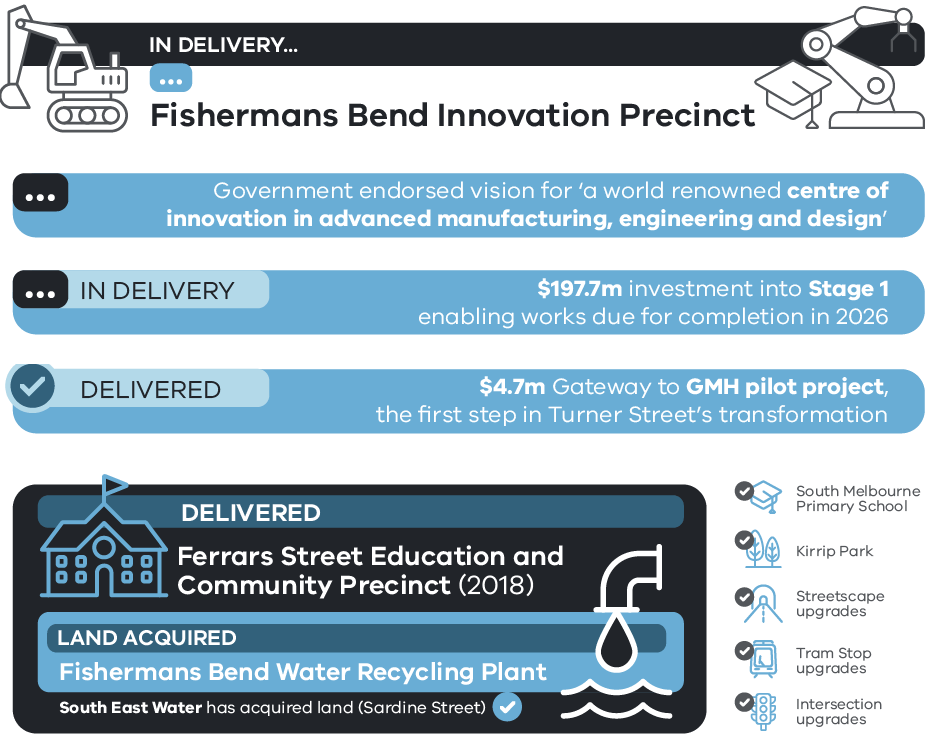Fishermans Bend is Australia’s largest urban renewal precinct covering approximately 480 hectares in the heart of Melbourne. Fishermans Bend consists of five precincts across two municipalities – the City of Melbourne and the City of Port Phillip – and connects Melbourne's CBD to the bay.
By 2050, it will be home to approximately 80,000 residents and provide employment for up to 80,000 people.
The transformation of Fishermans Bend is guided by the Fishermans Bend Framework; a plan for parks, schools, roads, transport and community facilities and services to ensure liveability as the precinct grows over the next 30 years. The Framework is supported by a suite of evidence-based research reports, strategies and plans and its development benefited from more than 12 months of engagement with community and other stakeholders.
Achievements and progress by 2025
Fishermans Bend is 485ha, and at over twice the size of the CBD, is Australia’s largest urban renewal precinct.
The nature and scale of transformation is unparalleled. Fishermans Bend is Australia’s largest urban renewal area, and will play a key role in the further evolution of central Melbourne as a world leading place to live, work, visit and invest.
The government endorsed Vision for the precinct is of ‘a thriving place that is a leading example for environmental sustainability, liveability, connectivity, diversity, and innovation’. In line with this Vision, Fishermans Bend is planned to accommodate 80,000 residents and 80,000 jobs by 2050, and to achieve new benchmarks in urban renewal.
The transformation of Fishermans Bend is guided by the Fishermans Bend Framework (the Framework) — a long-term strategic plan to guide for the development of the precinct.
In the seven years since the Framework was approved, there has been significant private and government investment in Fishermans Bend. Outcomes are occurring on the ground, and development is comfortably on track to achieve the vision for 80,000 residents and 80,000 jobs by 2050.
DELIVERY PARTNERSSuccessful implementation of Fishermans Bend is underpinned by strong partnerships.
|
HOUSING & JOB GROWTHFishermans Bend is comfortably on track to meet growth targets.
|
TRANSPORTThe vision for Transport in Fishermans Bend is for 80% of Transport movement to be made by public transport, walking and cycling, supported by an integrated transport strategy including cycle paths, bus routes, tram lines and underground rail line.
|
SUSTAINABILITYFishermans Bend is setting new benchmarks for sustainable and resilient urban transformation – representing world leadership in sustainable precincts.
|
EDUCATIONDelivery of three new schools as part of the Victorian governments program for 100 new schools by 2026. Three schools delivered, or in delivery, including:
Planning for two additional schools is in progress
|
FISHERMANS BEND INFRASTRUCTURE FUNDINGThe Fishermans Bend Development Contributions Plan (DCP) to support delivery of $2.7 billion of essential infrastructure was released for consideration in 2023.
Tranche 1 priority infrastructure in delivery, funded by interim development contributions, includes:
|
OPEN SPACEIn Fishermans Bend, all residents and workers will be within 200m walking distance of open space. Fishermans Bend Framework identifies 25.47 hectares of land for new open space (in addition to 16.8 hectares existing open space). New open space of 0.3 hectares for Kirrip Park in Montague South (Ferrars Street) was delivered in partnership between State and Local government in 2018. Additional open Space Projects In delivery include:
|
CATALYST PROJECTSSignificant government investment is supporting delivery of catalyst projects including approximately $197.7M investment in the Fishermans Bend Innovation Precinct. The Innovation Precincts is set to become a world renowned centre of innovation in advanced manufacturing, engineering and design.
In addition:
|
PLANNINGA significant body of planning and policy work has been undertaken as important precursor work to finalising precinct plans and infrastructure funding. Planning and policy work undertaken since 2018 has included:
|
Updated
